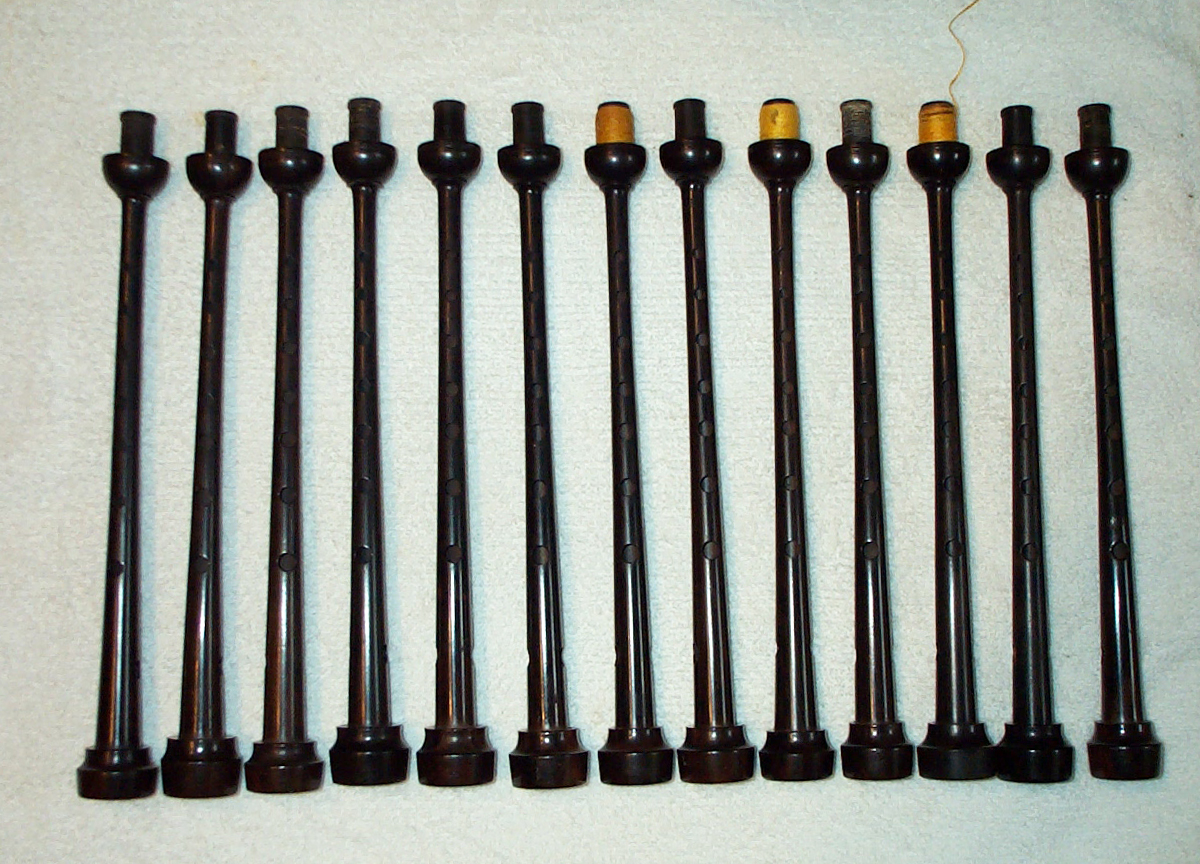Now, what's so difficult about making a chanter? All of the following factors contribute to the production of sound:
1. The dimensions (length and taper) of each bore
2. The relationship of each bore to other bores
3. The overall length of the chanter
4. The thickness of the wall of the chanter at each point along the chanter
5. The positioning of each note (sound) hole
6. The size of each note (sound) hole
7. The material (wood or plastic) used
The physics of the chanter/reed determines the pitch and frequency at which each note is produced. Taping a note hole or carving that note hole will adjust the pitch of the note however the frequency (harmonics) is of internal origin and little can be done to alter this. Some chanters have notes that do not harmonize with the drone sound. These chanters will be very problematic and should be avoided. Other chanters produce excellent harmonics throughout and should be sought out. The pitch of individual notes can be adjusted to suit the overall pitch you wish to play at and note-to-note trueness.
Building a chanter is much more complicated than is expressed here. It takes years to fully understand and appreciate the process. Research and development is long-term if not on-going, and very costly.
1. The dimensions (length and taper) of each bore
2. The relationship of each bore to other bores
3. The overall length of the chanter
4. The thickness of the wall of the chanter at each point along the chanter
5. The positioning of each note (sound) hole
6. The size of each note (sound) hole
7. The material (wood or plastic) used
The physics of the chanter/reed determines the pitch and frequency at which each note is produced. Taping a note hole or carving that note hole will adjust the pitch of the note however the frequency (harmonics) is of internal origin and little can be done to alter this. Some chanters have notes that do not harmonize with the drone sound. These chanters will be very problematic and should be avoided. Other chanters produce excellent harmonics throughout and should be sought out. The pitch of individual notes can be adjusted to suit the overall pitch you wish to play at and note-to-note trueness.
Building a chanter is much more complicated than is expressed here. It takes years to fully understand and appreciate the process. Research and development is long-term if not on-going, and very costly.
Ever wonder what a bagpipe chanter looks like inside? Ever wonder why there is such a range of sound and performance from chanters? This crude drawing will help you to understand what goes into the making of a bagpipe changer.
As you can see, the typical chanter has a number of bores. Specific chanters may have more or less. Regardless, we're dealing with multiple bores and complicated specifications. Starting at the top, we have the reed seat, a short tapered bore, and a parallel thru-bore. These three bores are critical to creating the necessary back-pressure that enables the reed to behave as it should. If you want to, think of the thru-bore as the vortex that receives sound waves from the reed and sends it out to the rest of the chanter. Beyond the thru-bore there is a long tapered bore and a bell at the bottom of the chanter.
As you can see, the typical chanter has a number of bores. Specific chanters may have more or less. Regardless, we're dealing with multiple bores and complicated specifications. Starting at the top, we have the reed seat, a short tapered bore, and a parallel thru-bore. These three bores are critical to creating the necessary back-pressure that enables the reed to behave as it should. If you want to, think of the thru-bore as the vortex that receives sound waves from the reed and sends it out to the rest of the chanter. Beyond the thru-bore there is a long tapered bore and a bell at the bottom of the chanter.
Anatomy of a Chanter



